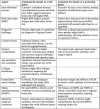A Comprehensive Review of Inguinal Hernia Occurrence in Obese Individuals
- PMID: 38348082
- PMCID: PMC10859212
- DOI: 10.26574/maedica.2023.18.4.692
A Comprehensive Review of Inguinal Hernia Occurrence in Obese Individuals
Abstract
Inguinal hernia repair is one of the most commonly performed surgical activities worldwide. Given the circumstances, understanding and identifying the risk and the protective factors is an essential step in order to prevent, diagnose and treat such a common condition. For a long time, obesity was generally considered to be a risk factor in the occurrence of an inguinal hernia. Studies have provided some unexpected data, suggesting that it might actually be a protective factor. This review aims to provide an overview on this topic, taking into account systemic aspects such as collagen distribution and metabolism. In inguinal hernia patients, the ratio between type I collagen and type III collagen is decreased, with type III collagen being responsible for the weakness of the abdominal wall. In obese patients, the extracellular matrix becomes richer in collagen, especially type I collagen, which will generate strength and stiffness. Obesity seems to be a protective factor indeed, but in order to understand the underlying mechanism and to choose the optimal surgical approach, further research is needed.
Figures
References
-
- Fitzgibbons RJ, Forse RA. Groin Hernias in Adults. New Engl J Med. 2015;372:756–763. - PubMed
-
- Vad MV, Frost P, Bay-Nielsen M, Svendsen SW. Impact of occupational mechanical exposures on risk of lateral and medial inguinal hernia requiring surgical repair. Occup Environ Med. 2012;69:802. - PubMed
-
- Vad MV, Frost P, Rosenberg J, et al. Inguinal hernia repair among men in relation to occupational mechanical exposures and lifestyle factors: a longitudinal study. Occup Environ Med. 2017;74:769. - PubMed
-
- Ruhl CE, Everhart JE. Risk Factors for Inguinal Hernia among Adults in the US Population. Am J Epidemiol. 2007;165:1154–1161. - PubMed
Publication types
LinkOut - more resources
Full Text Sources

